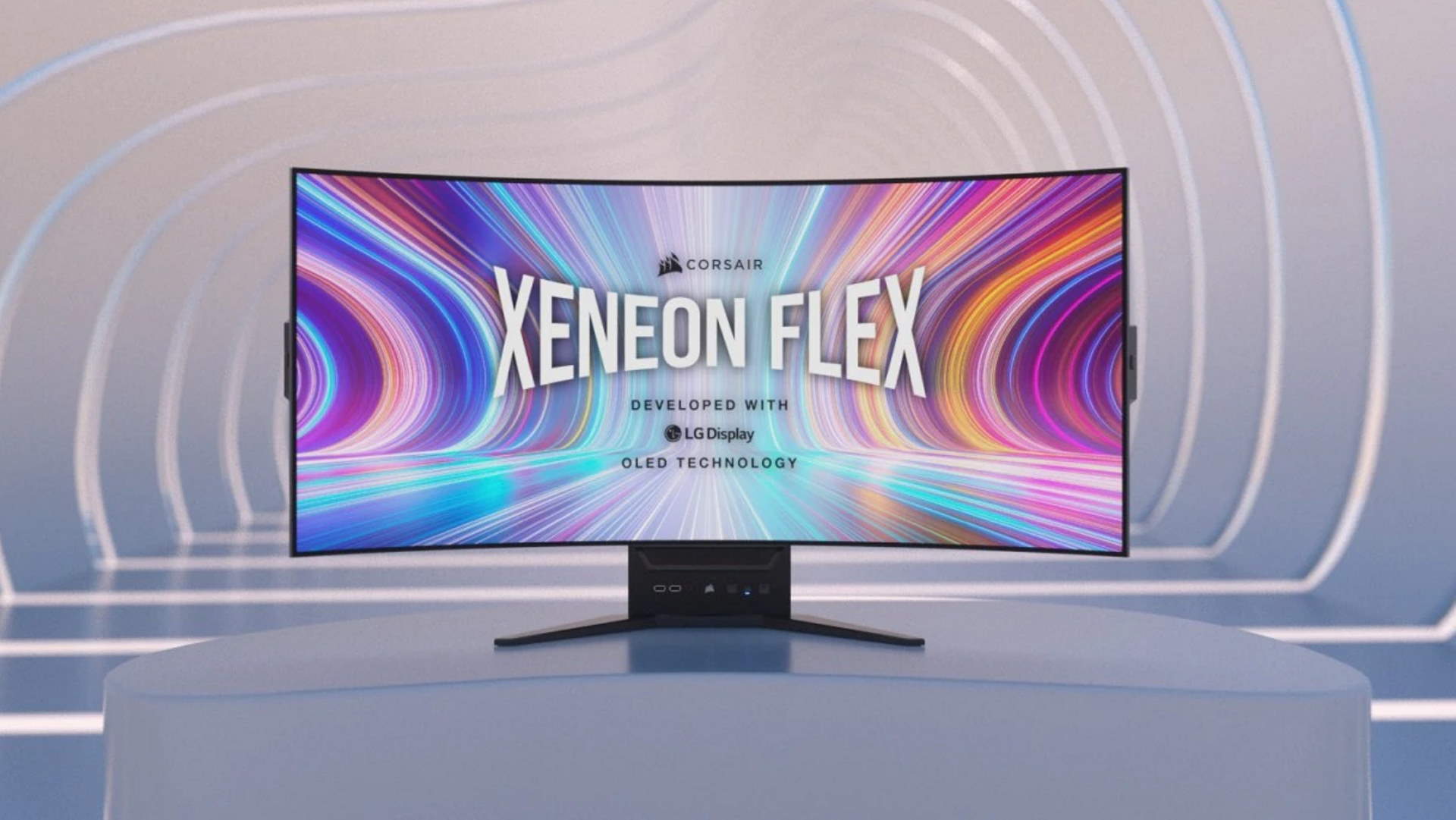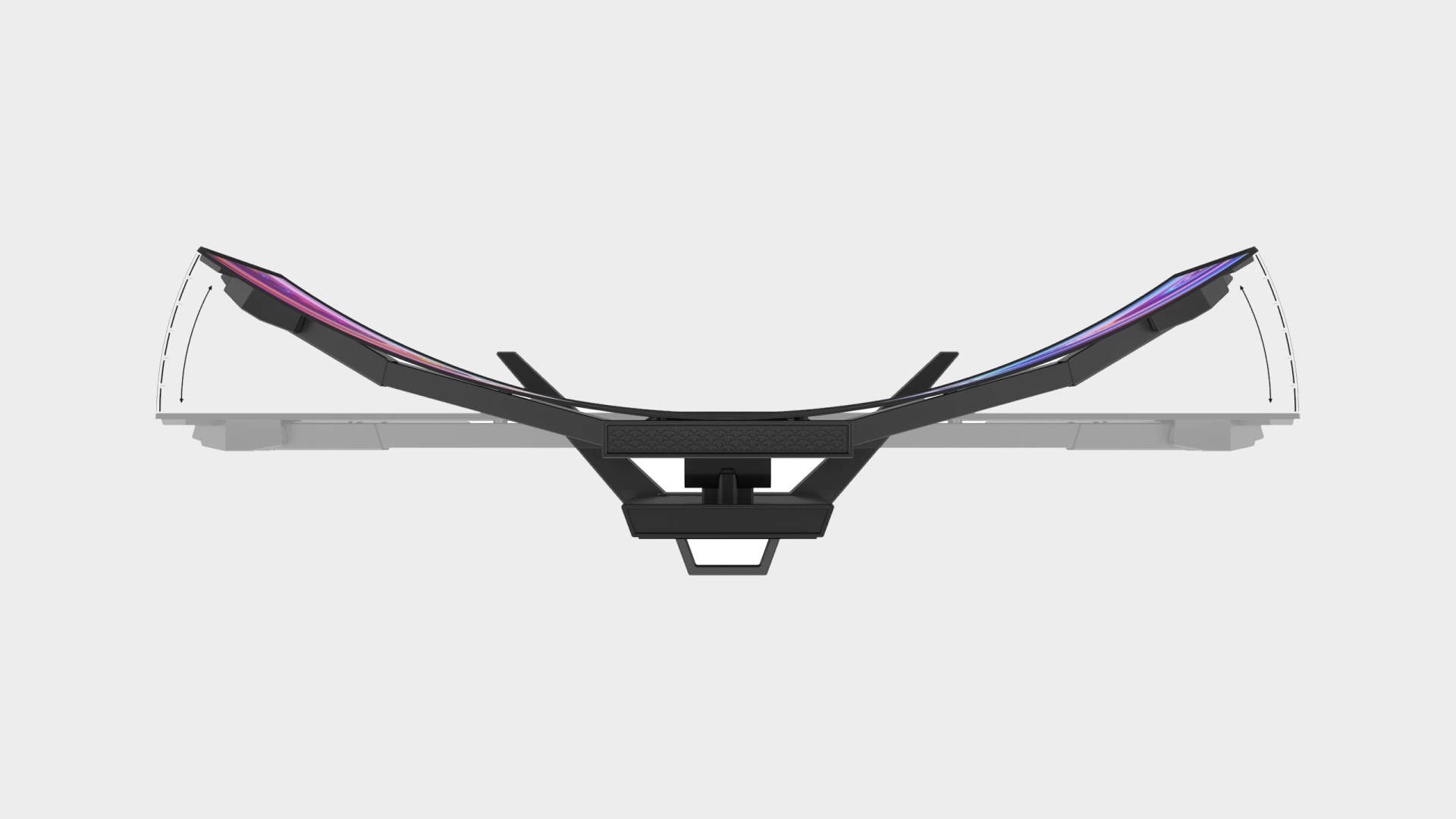Corsair's bendy OLED gaming monitor will be worth saving up for
After a couple of pretty standard screens, the new Xeneon Flex looks like a real game changer.
Corsair's new Xeneon Flex represents something rather new in the gaming monitor world. It's a bendable OLED panel, fitted in an ultrawide, 21:9 configuration and with a massive 45-inch expanse of screen.
And it already looks like my perfect gaming monitor.
I've already spoken about the peak gaming monitor era that we're about to enter, with the likes of Asus and BenQ showing off their own large-scale OLED panels, and Alienware having already released an ultrawide OLED screen from Samsung's display stable. But Corsair is teaming up with LG to create a unique, ultra high performance screen that will still be incredibly sympathetic to the power of your gaming PC.
While the other new big-screen OLEDs are seemingly pulled straight out of existing TV manufacturing lines, the Corsair Xeneon Flex's panel feels far more bespoke. For a start, that 45-inch, 21:9 scale is something you're not going to find in the home cinema. But you're also getting proper gaming monitor goodness in the shape of a 3440 x 1440 native resolution and a 240Hz refresh rate.
That means you're not going to need an RTX 4090 to be able to get the most out of this panel; the 21:9 native res is nowhere near as punishing as a 4K display.
Paired with that is an almost instantaneous 0.03 GtG response time for a silky image free that ought to be practically free of motion blur. It's also fully compatible with G-Sync and FreeSync Premium, too. You might even get something like a good HDR experience with OLED's fantastic contrast levels and the 1,000cd/m2 peak luminance of the screen itself.
And yeah, it's flexible. Bendable. Pliable. And, as much as I'd be terrified to flex what is sure to be a $,2000+ panel, I love the idea of being able to switch from flat screen for work or strategy games, to a super-tight 800R curve for first person gaming.
Keep up to date with the most important stories and the best deals, as picked by the PC Gamer team.
From the looks of the teaser trailer the change is fully manual, allowing you to adjust how tight a curve you actually want at any given time, with a supportive brace running along the backside of the panel itself.
The inevitable concern is that it will add another point of failure into the picture—potentially literally—will repeated flexing of the panel create an issue in the future? We want our expensive gaming monitors to outlast our PCs, after all. But on this point I have faith in LG. It's the original OLED manufacturer, and has been creating rollable OLED panels for years now.


And what of the classic peril of OLED: burn-in? Corsair claims to have that covered with "a sophisticated burn-in prevention system which operates when both powered on, and when switched off, to ensure a flawless image even after extended UI or OS use, all backed by a three-year Zero Burn in and Zero Dead Pixel Warranty."

Best gaming monitor: Pixel-perfect panels for your PC
Best high refresh rate monitor: Screaming quick screens
Best 4K monitor for gaming: When only high-res will do
Best 4K TV for gaming: Big-screen 4K PC gaming
Given the rather prosaic nature of the first Corsair gaming monitors, the Xeneon 32QHD165 and Xeneon 32UHD144, it's great to see the company pulling out all the stops for this absolutely next-gen display. It's first screens were good, just didn't really deliver anything that new for their high price. The Xeneon Flex, however, is a new class of transforming gaming monitor, probably for a very high price.
It's being demonstrated at Gamescom at the moment and we're going to get our hands on the widescreen beauty ourselves very soon.
We'll try not to break it.

Dave has been gaming since the days of Zaxxon and Lady Bug on the Colecovision, and code books for the Commodore Vic 20 (Death Race 2000!). He built his first gaming PC at the tender age of 16, and finally finished bug-fixing the Cyrix-based system around a year later. When he dropped it out of the window. He first started writing for Official PlayStation Magazine and Xbox World many decades ago, then moved onto PC Format full-time, then PC Gamer, TechRadar, and T3 among others. Now he's back, writing about the nightmarish graphics card market, CPUs with more cores than sense, gaming laptops hotter than the sun, and SSDs more capacious than a Cybertruck.

